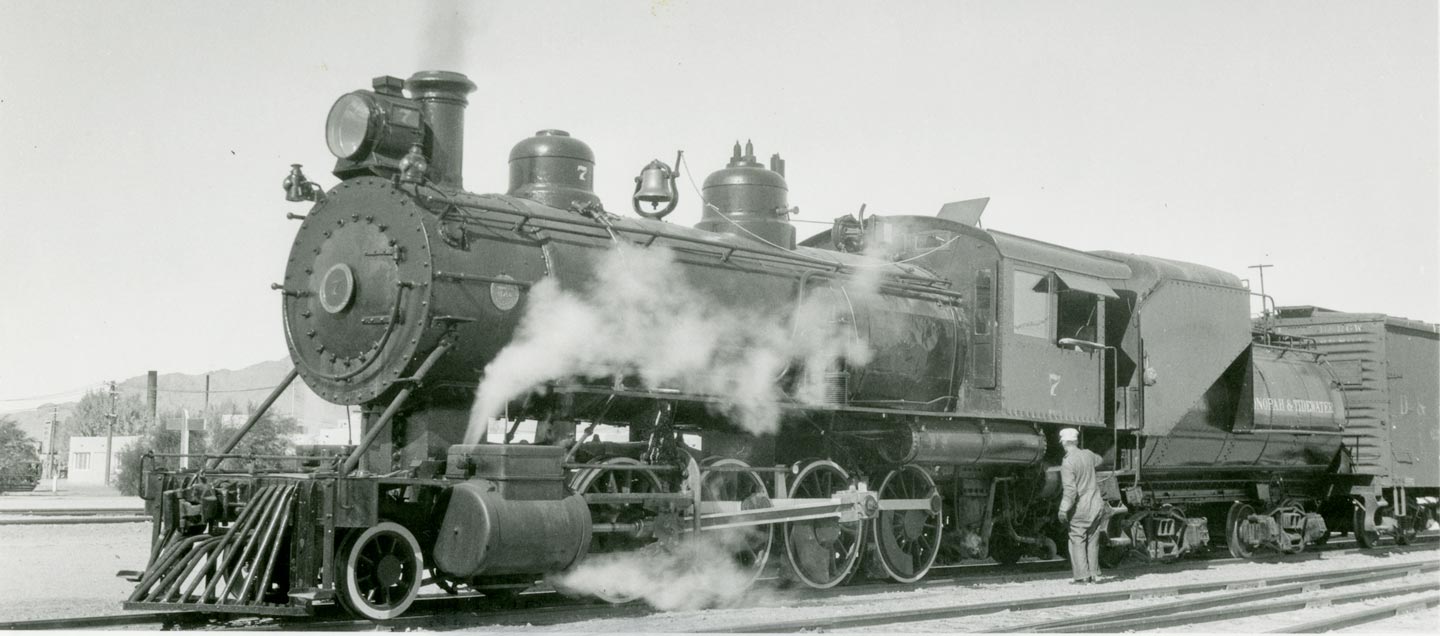

The idea that eventually became the Latinx Voices was first suggested years before the first interview was collected in 2018. Tom Rodriguez, a local historian for the Las Vegas Latinx communities, wanted this history preserved at UNLV, and his interview was among the first collected. During the three-year project, seven students from throughout the Latin American diaspora conducted oral history interviews, with funding provided by the National Endowment for the Humanities, MGM Resorts International, the Las Vegas Centennial Commission, and many private donors.
Mexican migration north began as most migratory impulses do — for work, for economic opportunities, for a better life. Railroad work was lucrative. In addition to Chinese workers, Mexicans joined that labor force as the Mexican Revolution of 1910 ensued, lasting a decade. This migration waxed and waned. During the Great Depression many returned home through the repatriation process but the World War II labor shortage brought them back through the Bracero Program. As noted in The People of Las Vegas: One City, Many Faces, “The Bracero Program, implemented in 1942, was an agreement whereby Mexico would provide labor for American farms and railroads through a program that guaranteed Mexican workers a minimum wage, housing, transportation, meals, and medical care. The Bracero Program helped create an enormous migrant network throughout the West that introduced Mexican workers to farming and ranching regions. In Nevada these included the areas around Elko, Winnemucca, Reno, Carson City, Pioche, Caliente, Moapa, and Las Vegas.”
One of the early Las Vegas Latinx families, that of Judge John Mendoza, immigrated because his grandfather worked in railroad-building jobs through the Bracero Program. Mendoza was a football legion in Las Vegas who attended college and law school and returned to help start the Latin Bar Association. Eva Garcia Mendoza told the football story to Elsa Lopez, a student oral historian, “He was the captain of the football team at Las Vegas High School that went undefeated, unscored upon, and no one ever made a consecutive first down. At the end of the year their score was 212 to nothing!”
A particularly special interview in this collection was with Christopher Maestas, who spoke about the LUPE Club (Latinos United for Perfect Equality) which promoted equity for all peoples of Latin heritage. The organization brought families together as Maestas explained, “So my parent’s good friends’ children were my friends. We read a lot of obituaries because my parents were on the younger end of their group. The family was a big important part of the LUPE club.” Maestas' family originally came to the area thanks to his grandfather’s job at Basic Magnesium Inc, the plant that started the City of Henderson. Maestas, who loved life and loved Las Vegas, passed away shortly after recording his oral history interview.
The beginning of the organized migratory waves was caused by Fidel Castro’s entry into Cuba in 1959. Liliam Hickey left in 1960 for Miami, then moved to San Diego and in 1964 came to Las Vegas. She sold real estate to other Latinos, and later took a job at the Clark County Welfare Department. Working with Legal Aid, she assisted Cuban refugees in receiving fair hearings. “The head of Legal Aid was B. Mahlon Brown who helped me with the refugees at the same time he was working with Ruby Duncan…I’m the Cuban Ruby Duncan.”
The Latinx Voices oral history project connects peoples within communities and across wide swaths of the city through 163 interviews that include a wide variety of neighborhoods in Las Vegas.
-Claytee White
Oral History Recordings
As part of this exhibition, we are specially including recordings of the actual oral history interviews. See the interviews of Liliam Lujan, Eva Mendoza Garcia, and Christopher Maetas below:
Recording of Liliam Lujan Hickey interview
Recording of Eva Mendoza Garcia interview
Recording of Christopher Maestas interview

Notes:
Hickey, Liliam Lujan. “An Interview with Liliam Lujan Hickey.” By Claytee D. White. Oral History Research Center, 7 September 2018.
Maestas, Christopher. “An Interview with Christopher Maestas.” By Claytee D. White. Oral History Research Center, 14 September 2008.
Mendoza, Eva Garcia. “An Interview with Eva Garcia Mendoza.” By Elsa Lopez. Oral History Research Center, 25 September 2018. Page 3.
The Peoples Of Las Vegas: One City, Many Faces, edited by Jerry L Simich, and Thomas C. Wright, University of Nevada Press, 2005.
Continue learning about the "Latinx Voices of Southern Nevada" project here.






